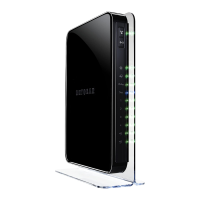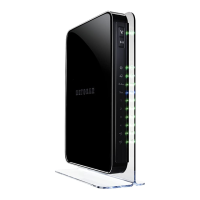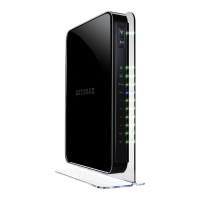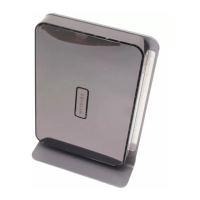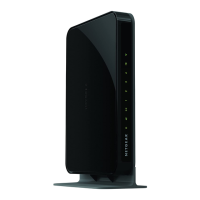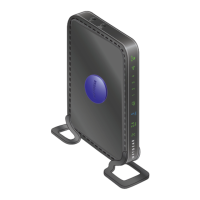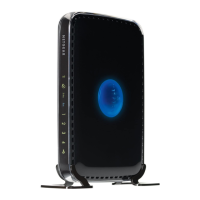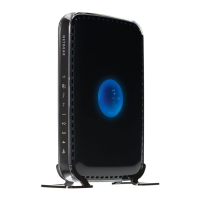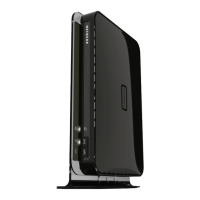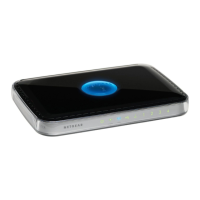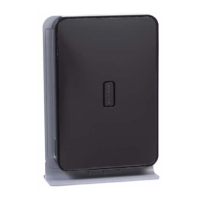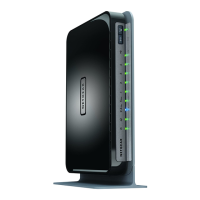
Do you have a question about the NETGEAR WNDR4300 and is the answer not in the manual?
| Ethernet LAN | Yes |
|---|---|
| Cabling technology | 10/100/1000Base-T(X) |
| Networking standards | IEEE 802.11a, IEEE 802.11b, IEEE 802.11g, IEEE 802.11n |
| Ethernet LAN data rates | 10, 100, 1000 Mbit/s |
| Ethernet LAN interface type | Gigabit Ethernet |
| Wi-Fi band | Dual-band (2.4 GHz / 5 GHz) |
| Wi-Fi standards | 802.11a, 802.11b, 802.11g |
| Top Wi-Fi standard | Wi-Fi 4 (802.11n) |
| WLAN data transfer rate (max) | 450 Mbit/s |
| Bandwidth | 2.4 GHz |
| Rack mounting | - |
| xDSL connection | No |
| Dimensions (WxDxH) | 218 x 160 x 35 mm |
| USB ports quantity | 1 |
| Minimum system requirements | - Internet Explorer 5.0, Firefox 2.0, Safari 1.4, Google Chrome 11.0 |
| WLAN data transfer rates supported | 300, 450 Mbit/s |
| Ethernet LAN (RJ-45) ports | 5 |
| Supported network protocols | IPv6 |
| Security algorithms | WPA-PSK, WPA2-PSK |
| Flash memory | 128 MB |
| Certification | - RoHS |
| Product color | Black |
| Cables included | LAN (RJ-45) |
| Windows operating systems supported | Windows 2000, Windows 2000 Professional, Windows 7 Home Premium, Windows 7 Home Premium x64, Windows 7 Professional, Windows 7 Professional x64, Windows 7 Starter, Windows 7 Starter x64, Windows 7 Ultimate, Windows 7 Ultimate x64, Windows Vista Business, Windows Vista Business x64, Windows Vista Home Basic, Windows Vista Home Basic x64, Windows Vista Home Premium, Windows Vista Home Premium x64, Windows Vista Ultimate, Windows Vista Ultimate x64, Windows XP Home, Windows XP Professional |
| Depth | 160 mm |
|---|---|
| Width | 218 mm |
| Height | 35 mm |
| Weight | 450 g |
Details the contents of the router package, including the router, stand, power adapter, and cables.
Step-by-step instructions for connecting the router, modem, and computer.
How to confirm correct cable connections using router LEDs.
Methods to connect devices to the wireless network.
Configuring and viewing basic Internet connection settings.
Managing USB storage devices connected to the router.
Configuring fundamental wireless network parameters like SSID and password.
Guides through automatic router setup and internet connection detection.
Configuration of Wide Area Network settings, including DMZ and MTU.
Configuring Local Area Network settings like IP address and DHCP.
Prioritizing network traffic for specific applications or devices.
Accessing and sharing USB drives connected to the router.
Accessing the router's USB drive from outside the local network.
Setting up USB drives for Time Machine backups from Macs.
Connecting and sharing a USB printer through the router.
Preventing access to websites based on keywords.
Blocking specific internet services or ports for network security.
Procedure to update the router's operational software.
Backing up, restoring, or resetting router configuration settings.
Configuring advanced wireless network parameters.
Extending wireless network coverage using WDS.
Creating exceptions for inbound traffic for applications and servers.
Allowing external hosts to connect to local network servers.
Configuring specific incoming traffic to reach local servers.
Using dynamic DNS services to access the router via a domain name.
Allowing remote access to manage the router over the internet.
Setting up an IPv6 Internet connection type.
Monitoring and controlling internet traffic volume.
Correct order for restarting network devices to resolve issues.
Solutions for inability to access the router's web interface.
Steps to resolve issues preventing internet access.
